Iranian Festivals and Celebrations
It is true that festivals highlight a region’s cultural splendors; visiting a place during festival days and participating in these traditional treasures while also taking in the local culture would be an unmatched experience.
Iranians are multi-ethnic people who practice a variety of different religions. As a result of this diversity, Iran celebrates several unique popular holidays throughout the year in various regions of its enormous country. There are a lot of Iranian festivals and events, which include ancient Persian festivals and religious festivals.
What Are The Famous Festivals in Iran?
Some of Iran’s most well-known festivals are even listed as Intangible Cultural Heritage of Humanity. Iranian holidays have a variety of historical origins, including Zoroastrian cultural traditions based on the Jalali calendar and Islamic celebrations based on the lunar calendar.
The first and most celebrated Iranian festivals are Persian celebrations. The most well-known Iranian festivals are held nationwide, while lesser-known ones are only observed in a few provinces and areas.
1. Nowruz Festival In Iran

Nowruz is the most important festival in Iran. The Persian New Year, or Norooz, is a traditional celebration that heralds the arrival of spring and the regeneration of nature. It has been celebrated for more than 3,000 years and has roots in the Zoroastrian religious tradition, one of the oldest in the world. Families get together to celebrate Noruz. Afghanistan, Albania, Azerbaijan, Iran, Kazakhstan, Tajikistan, and Turkey all celebrate it. In Iran, the practice of cleaning the house concurrently with the rejuvenation of nature is known as Khouneh Tekouni. New clothing and even new furniture are part of the rejuvenation celebrated throughout the Persian New Year. Like Santa Claus, Haji Firuz is a typical mythical character celebrating the new year. He is wearing bright red clothing and has a soot-covered face. People swarm around him as he dances while playing trumpets and tambourines to announce the arrival of Nowruz. Every Persian home lays a special tablecloth for Nowruz that features seven objects that begin with the letter “S” in the Persian alphabet:
• Sib (apple)
• Sir (garlic)
• Serkeh (vinegar)
• Sabzé (sprouts)
• Senjed (dried oleaster)
• Samanu (wheat pudding)
• Sumac (sumac fruit)
This tablecloth also includes painted eggs, mirrors, homemade sweets, flowers, and goldfish. Iranian families gather around the Haft Sin table on the first day of Nowruz (the first day of the Persian calendar), give presents, and hug each other.
| Read the complete article: All About Nowruz!
2. Sizdah Bedar
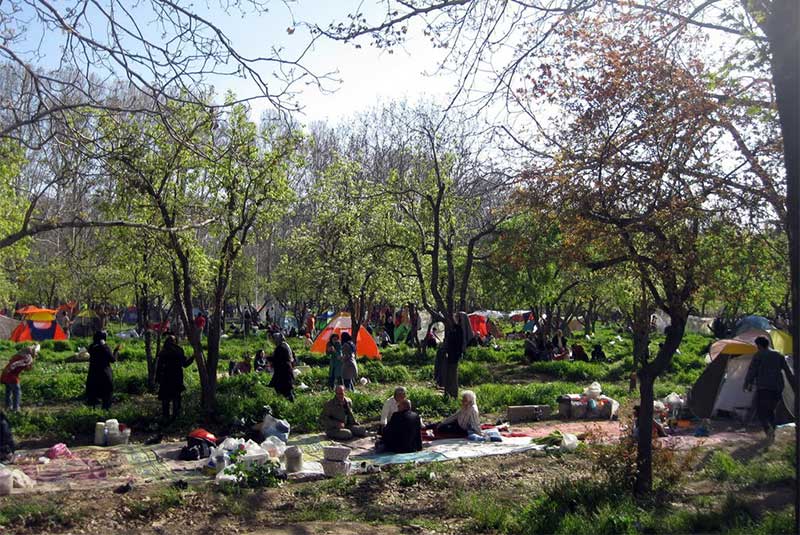
The Sizdeh Bedar celebration, which is one of the most popular Iranian festivals, is held on the thirteenth of Farvardin, the first month of the solar calendar, It falls on April 2. It is a holy day with many fortunate omens. Iranians leave their homes in Sizdeh Bedar to celebrate life, the beginning of spring, and to connect with nature. Thrown into the water is the Sabzé, one of the components of the Haft-sin, which we have mentioned before. As a result, the water eliminates everything negative and makes room for the rejuvenation and rebirth that the new season offers. Given that nearly everyone in Iran comes, it is a truly enjoyable celebration. People like being outside, playing various activities and games, and eating delectable dishes like kebab and ash Reshteh.
| The Complete article: Sizdah Bedar Festival
3. Chaharshanbe Soori
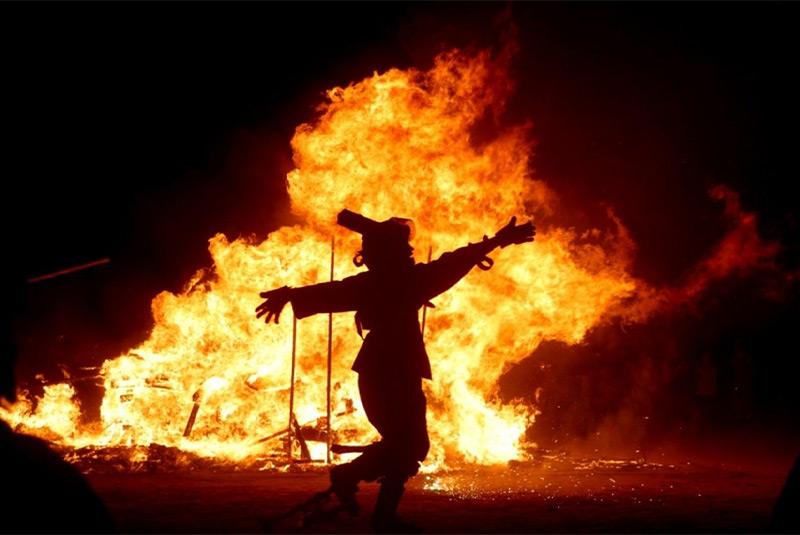
Make sure to attend one of the oldest Iranian festivals on the last Tuesday of the Persian year at sunset if you are traveling to Iran during these final days of the Persian calendar. The celebration is known as Chaharshanbe Soori, during which participants jump over the fire while chanting traditional songs after piling up bushes or wood logs to put on fire. During this festival, which is one of the most important events in Iran, a lot of flames are set in the streets because they stand for kindness and represent how the Iranians wish to enter the new year.
| Discover the complete article: Chaharshanbe Suri: The Festival of Fire and Renewal in Iran
4. Yalda Night (Persian Festival of Lights)

The longest night of the year was chosen to be the beginning of winter by our ancestors, who discovered a technique to measure time based on the location of the sun in the sky around 7000 years ago. That night is known as Yalda. Yalda festival in Iran falls on December 21, the day of the winter solstice, and is one of the oldest Iranian festivals. It also goes by the name Shabe Chele (which means the night of Lent). They commemorate the birth of the goddess Mitra, who stands in for the world’s light and represents fairness, truth, and compassion, as well as the victory of the light over darkness on this most momentous night. All through this night, bonfires are lighted to draw the kindness of Mitra. Iranians enjoy eating the fruits associated with Yalda Night, such as watermelon and pomegranate, along with their family; they also read the poetry of Hafez’s book (because they believe that Hafez can tell fortunes), perform traditional music, recount old tales, dance, sing and make unforgettable memories with their loved ones.
| Read the complete article: Yalda Night: An Ancient Persian Celebration
5. Sepandarmazgan Celebration
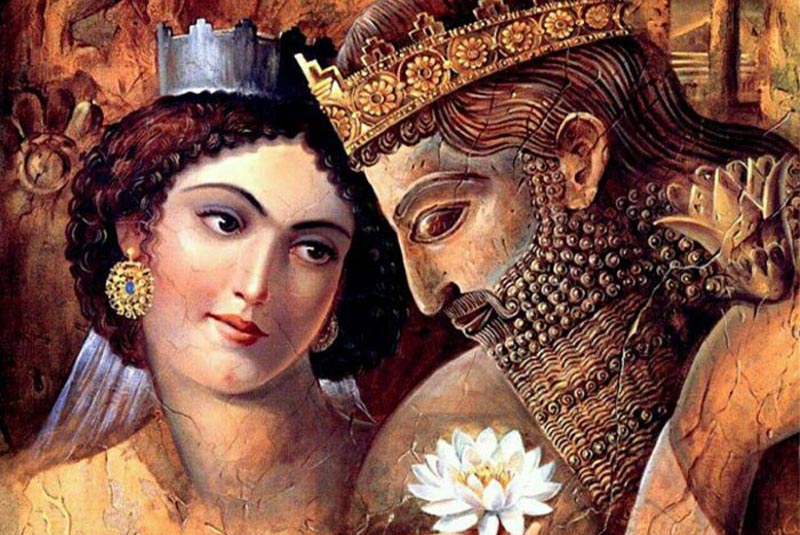
Sepandarmazgan, an old Iranian festival with Zoroastrian origins, is the day on which, in ancient Iranian culture, people celebrate love, friendship, and the Earth. The first Persian Empire dates back to the Achaemenid Empire. While it is held in Afghanistan and Tajikistan in addition to Iran, this event is commonly referred to as the Iranian Day of Love. The day of Sepandar Mazgan was celebrated in the Great Persian Empire in the 20th century BC, in accordance with Iranian custom. In the Iranian calendar, this holiday is celebrated on Bahman 28th, just three days after Valentine’s Day. Although some researchers consider it to be on February 17 or the 28th of Bahaman, the original Esfandegan (Sepandar Mazgan) was on the fifth day of Esfand, which corresponds to February 23.
6. Mehregan Festival

Depending on the alignment of both the Fasli (seasonal) calendar, which is used by Iranian Zoroastrians, and the Solar Hijri calendar, which is Iran’s official calendar, Mehregan, also known as Jashan-e Mehr, often takes place in the first week of October. According to these calendars, this alignment happens when the day of Mehr falls during the month of Mehr. It is a multifaceted holy festival that honors Yazata Mithra (also spelled Mihr or Mehr), our divinity and hypostasis of commitments, friendship, relationships, and covenants who appears in the majority of Zoroastrian scriptures starting with the Gathas of Zarathushtra onward, as well as the remembrance of other important events in the Zoroastrian culture. It is the Zoroastrian version of the Gregorian calendar’s typical September 21–22 Autumn Equinox. Additionally, Mehregan was a time to give thanks to God for a prosperous season by celebrating the harvest in the fall. Zoroastrians currently observe this day in Yazd and Kerman by praying, killing a sheep, dressing in unique clothes, and setting out a table of delectable treats, including sweets, nuts, and fruits.
7. Tirgan Festival

In the Mazandaran province, residents celebrate Tirgan on the eve of the twelfth day of the fourth month of the Persian (solar) calendar. The festival of Tirgan originated from the story of Arash, a legendary bowman who marked the border between Iran and Turan with an arrow before passing away shortly after, exhausted of all his might. People gather to eat traditional Iranian dishes, drink copious amounts of sherbet (beverage) and tea, and take part in theatre, poetry recitation and singing.
| Discover: Tirgan Festival; Water Festival in Iran from Ancient Times
8. Sadeh Festival

Zoroastrians participate in the ancient Persian ritual of the Sadeh festival. 40 days following the night of Yalda, it is observed for up to 3 days in the middle of winter. People attempt to bring warmth and light, combat the darkness and cold of winter, and express appreciation for God’s favors by building large fires, congregating around them, engaging in rituals, and donating foods like Aash (special Persian soup).
Islamic Festivals in Iran
As a Shiite Muslim nation, Iran also holds religious festivals with distinctive traditions throughout the nation. This is mostly due to Islamic Events. Here are some of them:
1. Tasua and Ashura
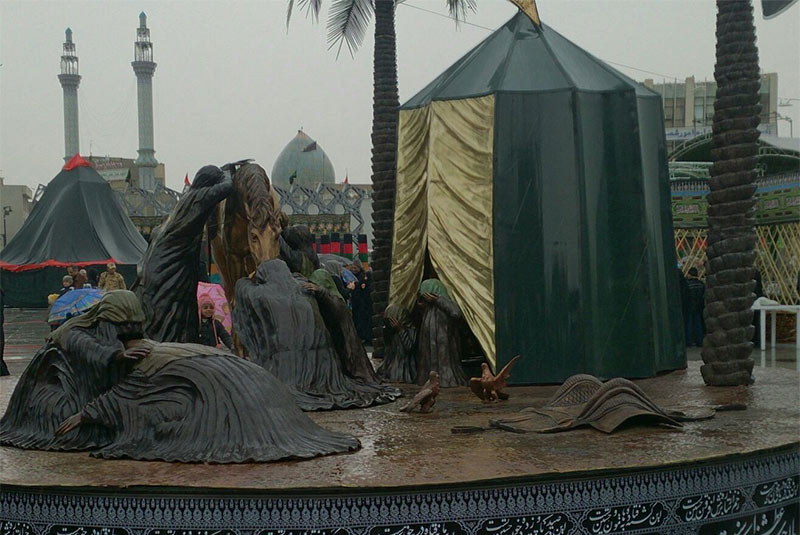
One of the major events in the lives of Shi’a Muslims is the cultural festival of Ashura and Tassua, which takes place during the month of Muharram, the first month of the Islamic calendar. It commemorates the anniversary of Husayn ibn Ali, Muhammad’s grandson, passing away in the Karbala War in the seventh century BC. You may take part in the Ashura rites in a variety of Iranian cities; however, some, like Yazd, Zanjan, and Busher, hold them with greater splendor.
| Discover: Sama Dance | A Spiritual Journey in Persian Culture
2. Ramadan
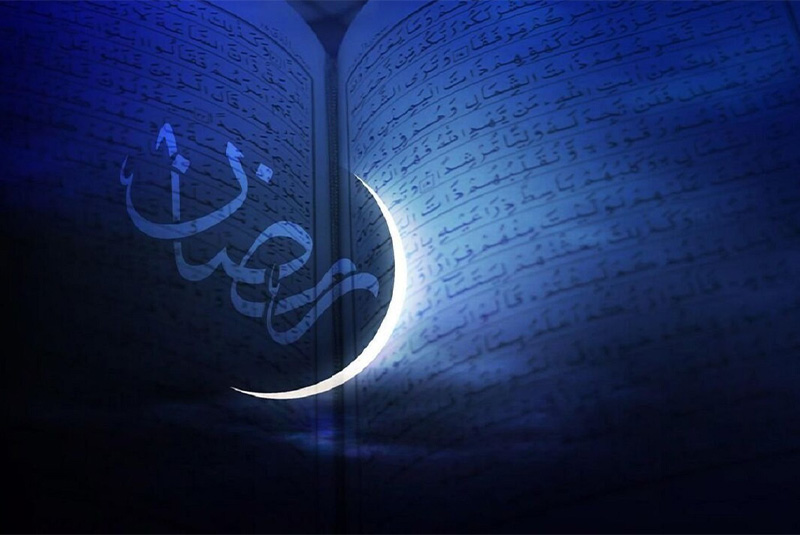
Ramadan, the ninth lunar month and the holiest month of the year for Muslims is when they fast from sunrise to sunset. The nights of Qadr, or the nights when Muhammad received the revelation of the Qur’an, are the 19th, 21st, 23rd, and 27th of Ramadan. The day of Imam Ali’s Martyrdom, Ramadan 21, is also a public holiday, and most tourist sites are closed on this day.
| Read more: Ramadhan
3. Shab-E Qadr (Nights of Qadr)
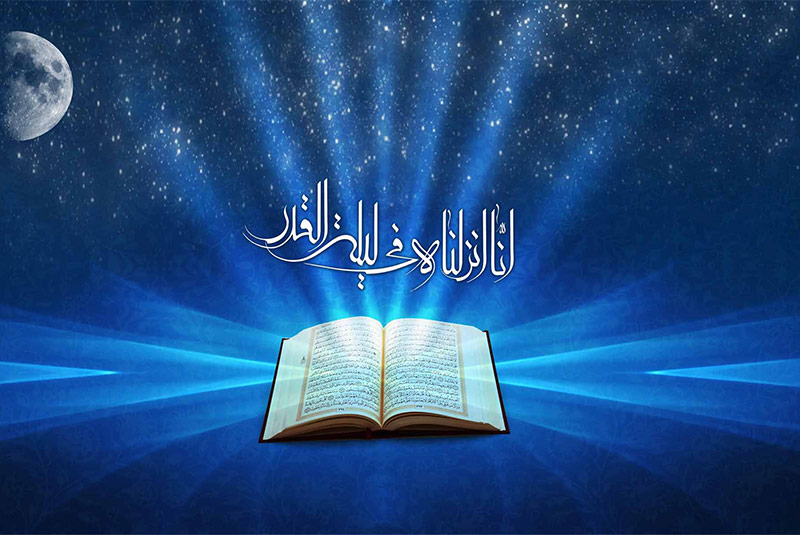
The Qadr Night, also known as the Night of Decree, Night of Power, Night of Value, Night of Destiny, or Night of Measures, is considered by Muslims to be the night when the Quran was first sent down from Heaven to the world as well as the night when the Islamic prophet Muhammad received the first verses of the Quran, and it is said to be superior to a thousand months of worship. Its precise date is unknown, although many Muslim sources agree that it occurred during one of the odd-numbered nights of the final 10 days of Ramadan, the ninth month of the Islamic calendar. Muslims have since viewed the final 10 nights of Ramadan as particularly auspicious. Muslims hold that the yearly decree is revealed to the angels, who carry it out according to God’s favor, and that the Night of Qadr is accompanied by the blessings and kindness of God in plenty, the forgiveness of sins, and the acceptance of supplications.
4. Nimeh Şaabân

Commemoration of the 12th and last Shi’a Imam. The celebration includes lighting up the city with lights, bulbs, and trees, as well as occasional fireworks displays. The Twelver Shia believe that Muhammad ibn al-Hasan al-Mahdi is the final of the Twelve Imams and the eschatological Mahdi who will manifest at the end of time to create peace and justice and restore Islam.
5. Eid-E Ghadir
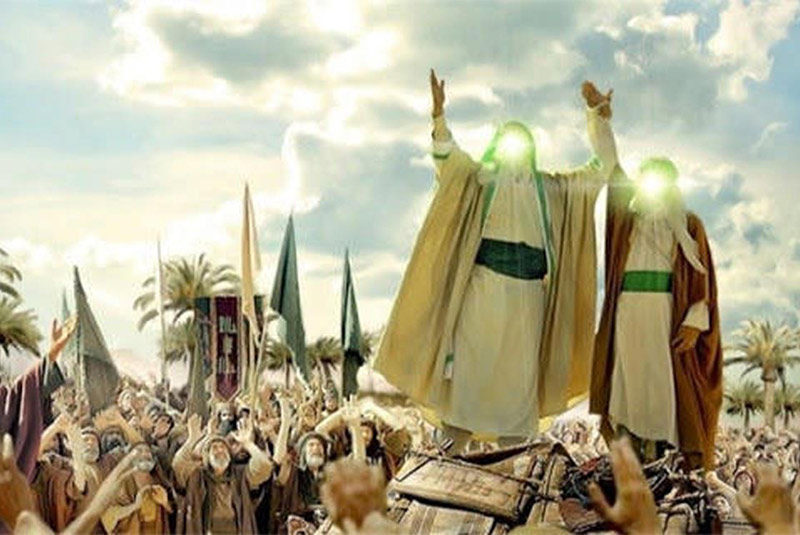
The Islamic lunar calendar’s last month is also when Eid-e Ghadir takes place. This Eid commemorated the occasion at Ghadir-e Khum when Ali was named as Muhammad’s successor on his final Hajj. It is a national holiday in Iran and is solely recognized by Shia Muslims.
6. Eid-E Fetr
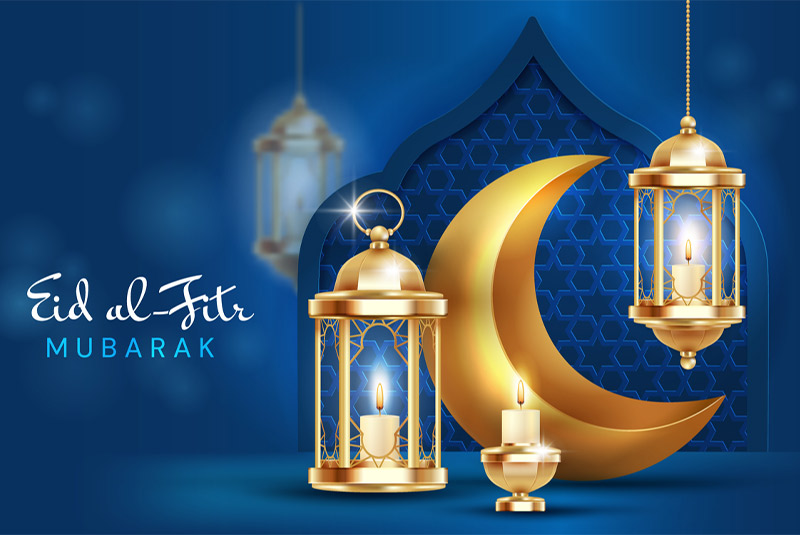
Eid-e-Fetr is a Muslim holiday that all Muslims celebrate immediately after Ramadan, the difficult days of fasting. A public holiday devoted to family get-togethers, food donations, brief getaways, and many other joyful family-based activities that starts early in the morning with mass prayers.
7. Eid-E Qurban
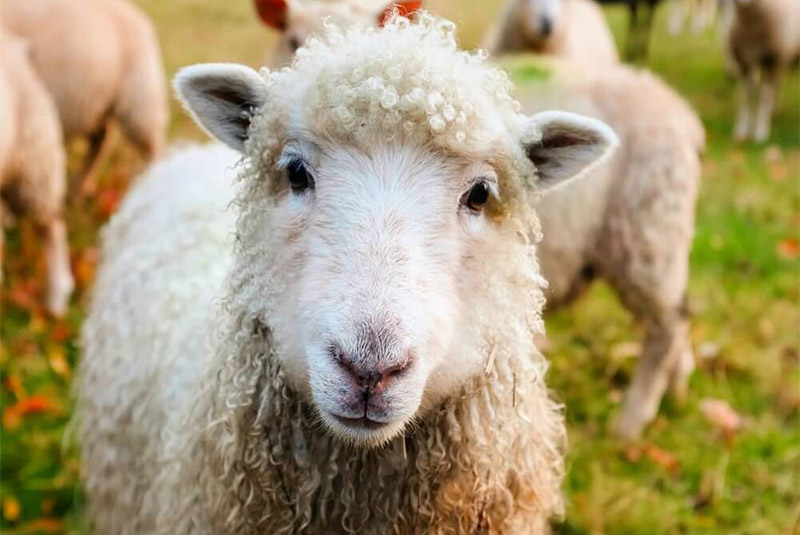
The Feast of Sacrifice, also known as Eid-e Ghorban, falls on the last month of the Islamic lunar calendar, which is the month of Hajj. It is recognized by all Muslims and begins with a public prayer like Eid-e Fetr. An animal, usually a sheep or a cow, is sacrificed and given to the needy and to family members on this day every year in remembrance of Ibrahim. Ibrahim was instructed to kill his son Ismaeel, and he complied with God’s request. However, once Ibrahim proved his desire to obey, God granted him a lamp and spared Ismaeel’s life.
Harvest Festivals in Iran
Visitors are becoming more and more interested in Harvest Festivals as a result of the range of goods produced within Iran’s varied environment. Saffron, pomegranate, pistachio, date, barberry, and pink rose are distinctive Persian goods that are the most significant ones for which farmers around the nation organize yearly harvest celebrations.
1. Saffron Harvest Festival In Iran
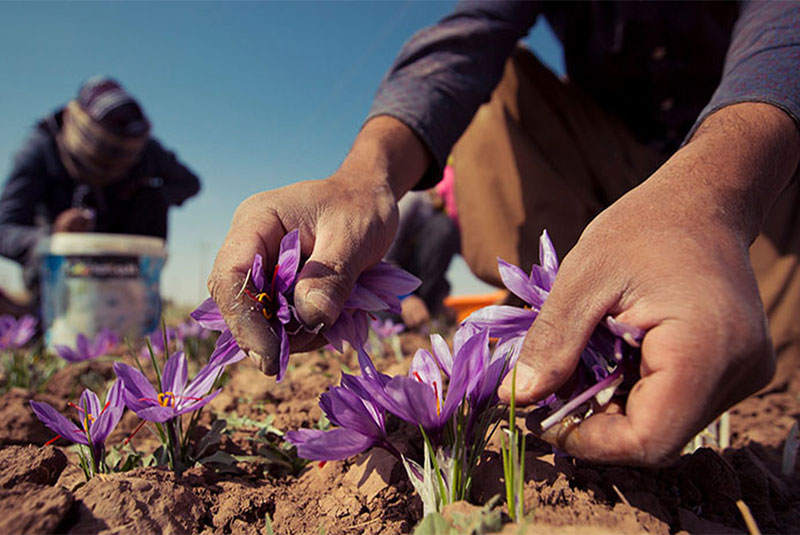
Saffron, the most precious spice in the world, is widely used in Persian cuisine. Though the city of Natanz is also noteworthy, the South Khorasan province is well renowned for its saffron farms. You’ll realize how difficult it is to get this spice after choosing the blossom (which will be replaced by a new one the next day!), delicately removing the red stigmas, and letting them dry. You’ll also regret throwing away the delicately honey-scented petals. Every year in November, farmers employ a large number of residents to harvest their saffron. Seven thousand purple saffron plants must be grown in order to produce one ounce of red saffron. The stigmas should be carefully removed from the hand-picked saffron flower.
2. Rosewater Festival In Kashan
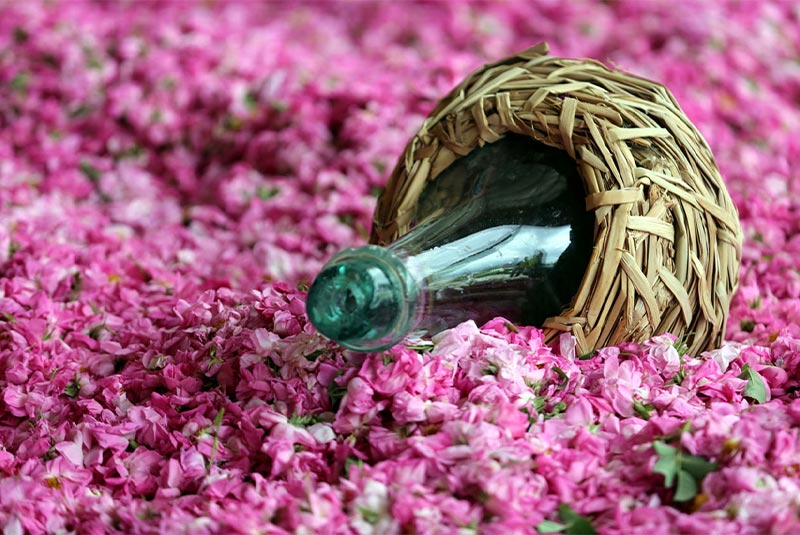
The nose and the eyes will both enjoy this festival. The fragrant pink Mohammadi rose grows in profusion in Kashan, a desert city best renowned for its old homes, and it eventually spreads to the Ghamsar area. Visit between May and June to see distilleries at work extracting the water from these exquisite blooms, and bring back a few bottles to use in the kitchen or to give your beauty routine a distinctively Persian flair.
| Read the complete article: The Fragrance Festival | Golabgiri Season in Iran
3. Pomegranate Festival

Pomegranate trees have a long history in Iran since, throughout the Zoroastrian period, these trees were placed in temples. Iranians celebrate the start of the harvest season with pomegranate festivals when local musicians perform, kids dress up in bright outfits, youngsters engage in neighborhood sports, and farmers display their harvests as well as a variety of pomegranate-related items.
Bottom Line
Annual cultural and religious events abound in Iran, giving visitors a glimpse into the life of the country’s citizens.In this article, you have been introduced to some of the most important Iranian festivals. You will learn more about the spirit of the nation if you participate in one of these festivals.
Share your story!
Comment below and let us know about your Experience.
Your story inspires others!


Comment
Leave a Comment